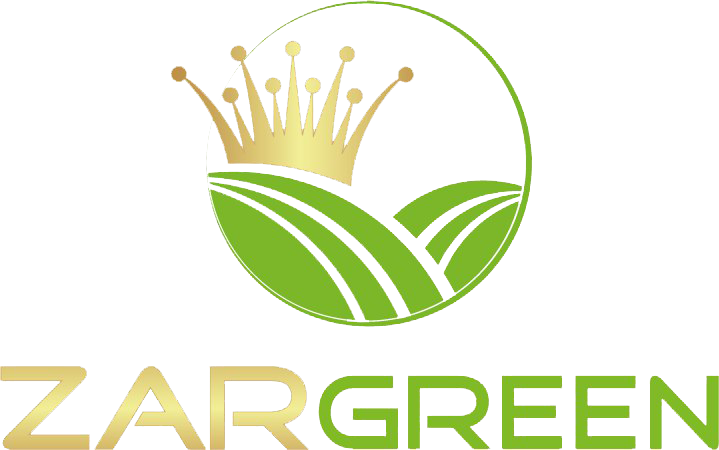Comparison of chicken manure with Zargreen product
- Dead organic matter: These are organic materials formed from dead organic materials, resulting from chemical and microbial changes in deceased organisms.
- Living organic matter: These are organic compounds formed from plant roots, plant residues, and microorganisms.
- Humic substances: These are a significant component of natural organic materials found in sedimentary deposits such as lake sediments, peat, lignite, and shales. They have a dark brown to dark brown color, which is due to the presence of humic substances. As a result, soils with high organic matter content have darker colors.
- Non-humic organic substances: These include amino acids, carbohydrates, and lignin.
- Compounds derived from the decomposition of plant and animal organisms, such as decomposed plant parts and deceased organisms, which are transformed into organic carbon by soil microorganisms.
- Processed compounds (compost) or unprocessed compounds (raw) with animal origin, such as animal manure and poultry droppings.
- Compounds obtained from recycling processes, such as municipal compost and agricultural waste.
- Compounds derived from Leonardite mines, which have a high percentage of humic and fulvic acids.

Poultry manure is a composite fertilizer that contains carbon in its structure as part of organic compounds. Pilot studies conducted on maize cultivation with the analysis presented in Table (1) in 2005 indicate that the use of poultry manure at a rate of 30 tons per hectare resulted in a significant increase in vegetative growth factors. The main reason for this improvement is the increase in soil organic matter content, leading to a rise in nitrogen levels. Additionally, the use of this fertilizer led to a considerable increase in soil phosphorus reserves. However, excessive and consecutive annual application of this fertilizer can lead to soil toxicity related to phosphorus accumulation (1).
One of the disadvantages of using organic fertilizers (such as poultry manure) in agriculture is the high electrical conductivity (EC) of these compounds, usually ranging from 8 to 14 ds/m. This results in an increase in salt cations, causing soil salinity and gradual soil structure degradation, as well as a decrease in nutrient uptake by plant roots. Another drawback of poultry manure is the high level of ammonium nitrogen (NH3). Approximately 80% of the nitrogen in this fertilizer is present in the form of ammonia. Since poultry manure is applied at significant quantities (approximately 2-3 tons per hectare) on agricultural lands, during hot seasons, the ammonia generated from this compound can lead to side effects, including root burn on plants.
Currently, processed poultry manure is available to farmers in liquid and pellet forms, which have reduced the side effects of raw poultry manure. The analyses of these forms are compared to raw poultry manure in Table (2).

Table (2) shows that the NPK ratios in raw poultry manure (unprocessed) remain unchanged compared to pellet and liquid forms. Furthermore, the comparison of organic carbon, as the main factor in these types of compounds, indicates that the amount of organic carbon in raw poultry manure is significantly higher than the processed forms. One of the essential factors in organic fertilizers, especially poultry manure, is the electrical conductivity (EC) of the fertilizer. The solid forms of poultry manure have a much higher EC than the liquid form. Additionally, the pelletized poultry manure contains high levels of sulfur and calcium, which are related to its use in the production processes.
In general, the liquid form of poultry manure is more preferred in agriculture compared to other forms. This preference is due to its lower electrical conductivity compared to other poultry manure forms. Moreover, the liquid form requires a lower consumption rate of 20-40 liters per hectare and does not necessitate special equipment such as sprayers and tractors. It can be easily used throughout the cultivation season along with irrigation.
Table for calculating the cost of using pelleted chicken manure in one hectare:


- This compound contains a high percentage of 17 types of plant-based amino acids, which significantly impact growth and improve photosynthesis. Its use enhances plant resistance to drought stress.
- Unlike other organic compounds, this mixture has a low Electrical Conductivity (EC) value, approximately 0.8 dS/m.
- The pH of this compound ranges from 4 to 5.3, which is much lower compared to liquid poultry manure.
- It is suitable for foliar spraying on the plant’s green surface due to its acidic pH and the presence of amino acids.

- Effect of Different Levels of Concentrated Poultry Manure on Growth Traits and Photosynthetic Indices of Saffron – Mohammad Reza Aminifard, Zahra Ghelichzadeh. Faculty of Agriculture, Birjand.
- Investigation of the Effect of Different Levels of Nitrogen and Poultry Manure Fertilizers on Quantitative and Qualitative Traits of Autumn Cucumber – Davood Hashemabadi, Abdolkarim Kashi.
- Effect of Poultry Manure and its Mixing with Soil on the Concentration of Nutrients in Maize Grain – Saifollah Fallah, Amir Gholavand, Seyed Mahmoud Samar, Alireza Yadavi. Journal of Agriculture, Winter 1390.
- Effect of Vinasse on Nutrient Content, Growth Traits, and Yield of Basil – Afsaneh Alinezhadian Bid Abadi, Tara Jameili, Abbas Maleki.
- Effect of Organic and Biological Fertilizers on Some Traits of Tomato – Morteza Tabesh, Alireza Koocheki, Mohsen Jahani, Mehdi Naseri Mahallati.
- Book: Soil Organic Matter – Dr. Ali Akbar Safarisanjani, Bu-Ali Sina University Press, Hamedan.
